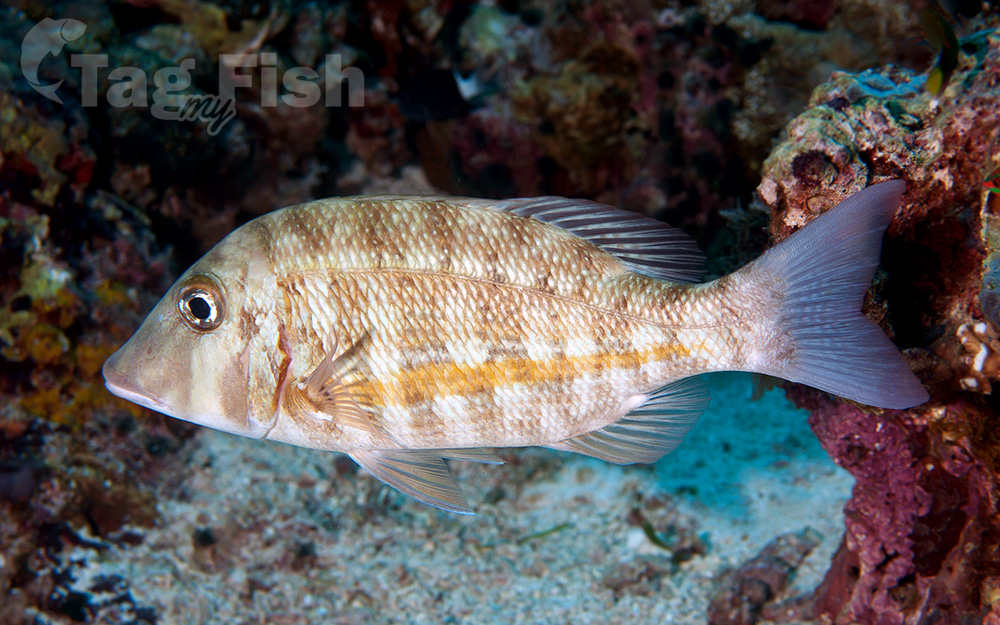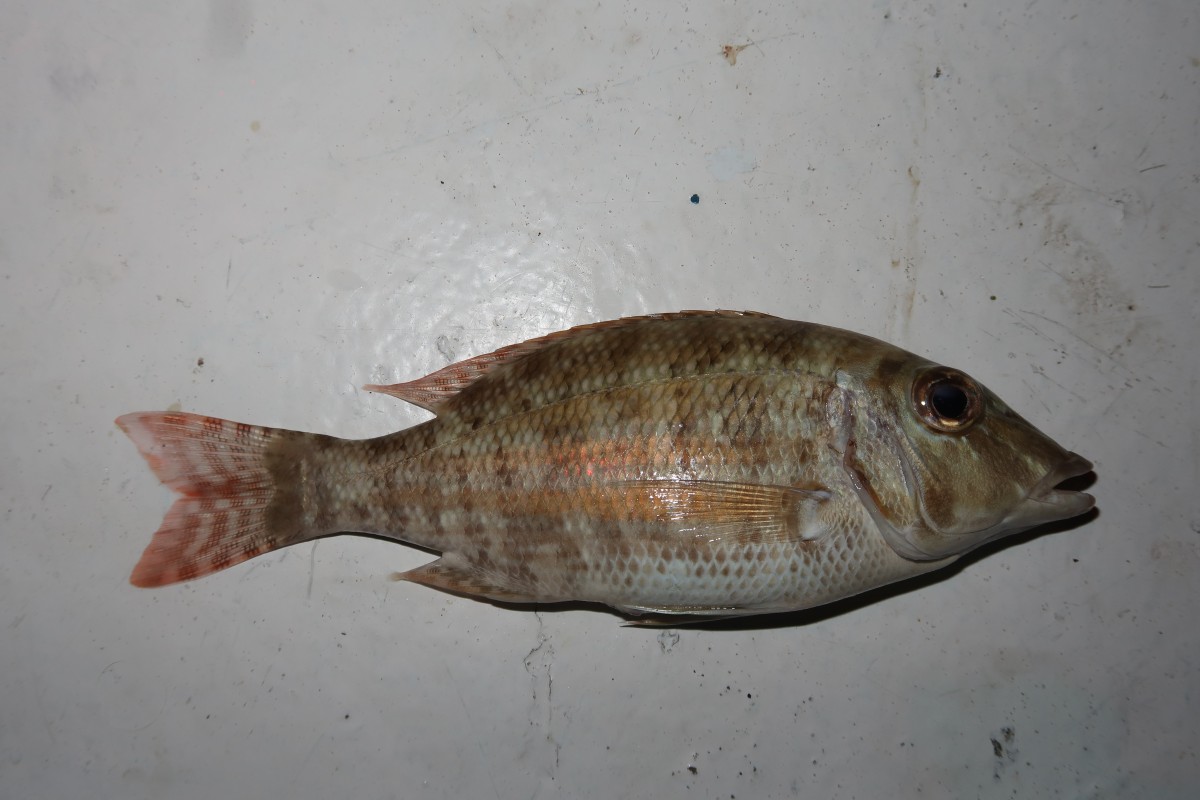Orange-striped emperor
(Lethrinus obsoletus)

Classification
General data
Lethrinus obsoletus, the orange-striped emperor, yellow-banded emperor or yellowstripe emperor, is a species of marine ray-finned fish belonging to the family Lethrinidae, the emperors or emperor breams. This species has a wide Indo-Pacific distribution.
Lethrinus obsoletus has its dorsal fin supported by 10 spines and 9 soft rays while there are 2 spines ands 8 soft ratys supporting its anal fin. The body is moderately deep, the depth fitting into its standard length 2.4 to 2.8 times. The dorsal profile of the head around the eye is straight or a little convex and on the snout it is also slightly convex.
The teeth in the jaws at the sides of the mouth are rounded or conical. The axilla of the pectoral fin is densely scaled.
The overall colour is light tan to olive-brown with a horizontal yellow-orange stripe along the lower flank between the base of the pectoral fin to the caudal peduncle. There are two indistinct yellowish orange stripes above the main stripe and there are a number of wide, faint, vertical and oblique dark and light coloured bands on the head, with white spots sometinmes shoeing under the eyes. The fins are whitish or yellowish brown and are sometimes blotched.
This species has a maximum published total length of 60 cm (24 in), although 30 cm (12 in) is more typical.
Lethrinus obsoletus has a wide distribution in the Indian and Western Pacific Oceans. It is found along the coast of eastern Africa from the Red Sea south to Sodwana Bay in South Africa. It is found acroos the iNidan Ocean into The Pacific as far as the Ryukyu Islands, Tonga and Samoa.
In Australian waters it is found at Rowley Shoals, Scott Reef and Hibernia Reef off Western Australia, the Cocos (Keeling) Islands, Ashmore Reef in the Timor Sea and along the northern Great Barrier Reef off Queensland. The orange-striped emperors is typically found in seagrass beds, as well as over sand and rubble areas in lagoons and in reefs. The juveniles prefer seagrass beds and then as they grow they begin to live in reefs. They are found as deep as 30 m (98 ft).











